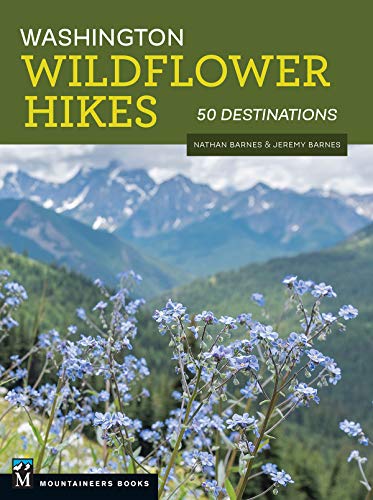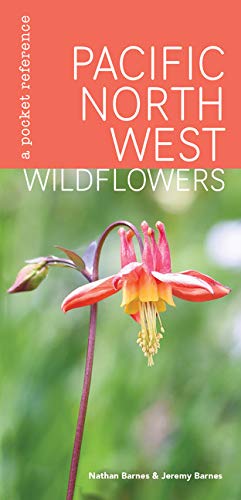Rock Candy Trailhead - Capitol State Forest
This low elevation loop through Capitol State Forest is a decent off-season option and a good introduction to this managed forest.
Total Distance: 5.5 miles
Total Ascent: 1000ft
Highest Point: 1500ft
Total Ascent: 1000ft
Highest Point: 1500ft
To get there, take I-5 South to Olympia and take Exit 104 onto US 101 North. Continue on US 101 North as it merges into US 8 after 6 miles. Take US 8 for 4.7 miles to Rock Candy Mountain Road. Turn left and follow the road a few tenths of a mile to the Rock Candy Trailhead and parking area. View Google Directions >>
This loop begins directly across the road from the Rock Candy Trailhead parking lot, following the well maintained North Rim Trail into the woods. Continue along the wide trail for a few tenths of a mile to the junction with the Rock Candy Mountain Trail. Avoid the temptation to wander across the bridge, you’ll end up there at the end of the hike. For now, head right on the North Rim Trail as it begins its climb up the mountainside. The forest along the trail is fairly young, and evidence of recent logging is never too far off. As you press upwards the trail steepens and beings to switchback up to the shoulders of Rock Candy Mountain, ultimately reaching a forest road known as Army Road. This is the highest point on this loop, though there is little scenery to enjoy, recent logging activity has provided a view of the Black Hills to the south. Head left along Army Road to the Army Road Tie Trail and the shelter of the forest. Find the Rock Candy Mountain Trail almost immediately and follow it back to the trailhead.
While there isn’t anything particularly spectacular to see along this hike, this little loop is a decent winter option and is a great introduction to Capitol State Forest. These trails do see a lot of off-road vehicle traffic during the summer months, but they’re closed to motorized vehicles from November to May, making this a good time of year to do a little exploring. If you’re looking to expand on this route, the Department of Natural Resources offers a decent map to help you navigate the trails. If you haven’t given Capitol State Forest a visit, give this loop a try this weekend.
By 1955 the area had recovered enough to allow public access and a long tradition of recreation in this managed forest began. Since that time, Capitol State Forest has only expanded, now boasting more than 90,000 acres and offering a wide variety of recreational resources. Riddled with forest roads, trails, and former railroad beds, Capitol State Forest attracts hikers, trail runners, campers, mountain bikers and off-road vehicle riders. Since 1975, the trails have been divided between motorized recreational use in the north half of the forest, and non-motorized recreation in the south to minimize interactions between equestrians and off-road vehicles. Today, Capitol State Forest hosts more than 800,000 visitors a year, and offers a little something for everyone.
While there isn’t anything particularly spectacular to see along this hike, this little loop is a decent winter option and is a great introduction to Capitol State Forest. These trails do see a lot of off-road vehicle traffic during the summer months, but they’re closed to motorized vehicles from November to May, making this a good time of year to do a little exploring. If you’re looking to expand on this route, the Department of Natural Resources offers a decent map to help you navigate the trails. If you haven’t given Capitol State Forest a visit, give this loop a try this weekend.
History
Logging and the lumber industry loom large in the story of Capitol State Forest. Loggers have been knocking down its trees since the 1870s, back when this area of the country was still called the Washington Territory. Railroads and logging companies worked at a breakneck pace, chopping down forest as rapidly as possible, practices that ended up resulting in a series of forest fires that cleared tens of thousands of acres of vegetation. By 1933, the situation had become so dire that the legislature stepped in and purchased over 50,000 acres of what would become the Capitol State Forest to be managed as a commercial forest. In order to rehabilitate the land, the public was kept out of the area and the Civilian Conservation Corps was called in to plant millions of seedlings between 1938 and 1942.By 1955 the area had recovered enough to allow public access and a long tradition of recreation in this managed forest began. Since that time, Capitol State Forest has only expanded, now boasting more than 90,000 acres and offering a wide variety of recreational resources. Riddled with forest roads, trails, and former railroad beds, Capitol State Forest attracts hikers, trail runners, campers, mountain bikers and off-road vehicle riders. Since 1975, the trails have been divided between motorized recreational use in the north half of the forest, and non-motorized recreation in the south to minimize interactions between equestrians and off-road vehicles. Today, Capitol State Forest hosts more than 800,000 visitors a year, and offers a little something for everyone.
Nearby hikes
Similar Difficulty
Similar Features












